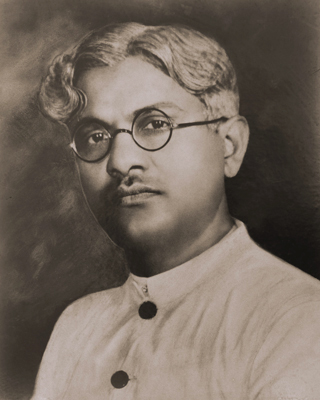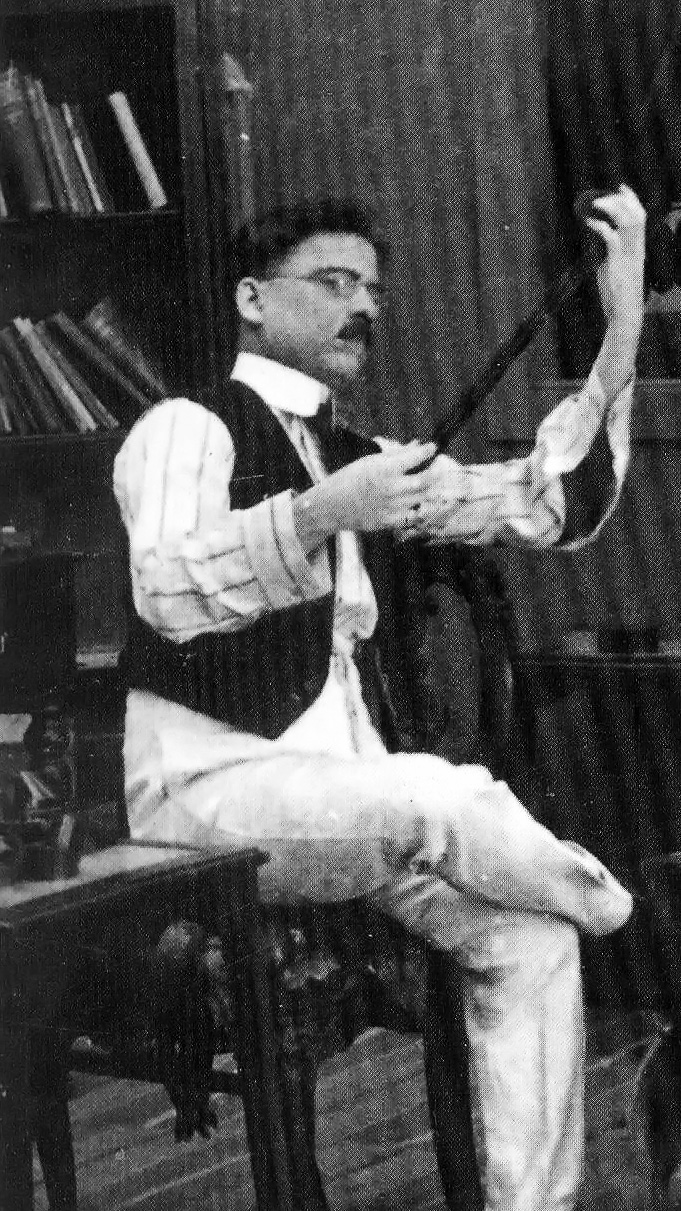|
Musafir (1940 Film)
''Musafir '' is a 1940 social Hindi language film directed by Chaturbhuj Doshi. Produced by Ranjit Studios, the music was by Gyan Dutt and it starred Noor Mohammed Charlie, Khursheed, Ishwarlal and Yakub. The story was about a prince (Charlie) who returns to his kingdom and finds it in a mess due to the evil-doers' conspiracies to take over. The film was given a good review by the editor of '' Filmindia'', Baburao Patel, adding, "For sheer entertainment ''Musafir'' is hard to beat". Cast * Noor Mohammed Charlie * Khursheed * Ishwarlal * Yakub Yakub, Yaqub, Yaqoob, Yaqoub, Yacoub, Yakoub or Yaâkub (, also transliterated in other ways; ''Yakob,'' as commonly westernized) is a male given name. It is the Arabic version of Jacob and James. The Arabic form ''Ya'qūb/Ya'kūb'' may be direct ... * Vasanti * Bhupatrai * Kesari * Mirza Mushraff * Bhagwandas Music The music direction was by Gyan Dutt with lyrics written by D. N. Madhok. The singers were Brijmala, Khursheed, Char ... [...More Info...] [...Related Items...] OR: [Wikipedia] [Google] [Baidu] |
Chaturbhuj Doshi
Chaturbhuj Doshi (1894–1969) was a Hindi and Gujarati language, Gujarati writer-director of Indian cinema. He was one of the top Gujarati screenplay writers, who helped script stories for the Punatar productions. He is stated to be one of the leading figures who launched the Gujarati film industry with work on notable films like ''Gunsundari (1948 film), Gunsundari'' (1948) and ''Nanand Bhojai'' (1948). Doshi, was “well known” for his family socials and had become “a celebrity in his own right”. He made a name for himself as a journalist initially and was referred to as the "famous journalist" and publicist by Baburao Patel, editor of ''Filmindia''. His debut film as a director was ''Gorakh Aya'' (1938), produced by Ranjit Studios, Ranjit Movietone, though he joined Ranjit in 1929, as a scriptwriter. In 1938, he directed another film for Ranjit, a social comedy, ''The Secretary (1938 film), The Secretary'', and both films were box-office successes for Doshi. His forte w ... [...More Info...] [...Related Items...] OR: [Wikipedia] [Google] [Baidu] |
Gyan Dutt
Gyan Dutt was one of the most prominent music directors in Bollywood in the 1940s. He was music director for films such as The Secretary, ''Thokar'' (1939), '' Achhut'' (1940), ''Bhakta Surdas'' (1942), '' Sunehre Din'' (1949) and '' Ghayal'' (1951). Many of his songs were sung by K. L. Saigal. In 1948 he composed seven songs for a young Geeta Dutt in the films '' Chanda Ki Chandani'' and '' Hua Savera'', although their most notable collaboration was '' Dilruba'' (1950) in which Dutt wrote eight songs, six of which were solos for Geeta Dutt. Notable songs Notable songs written by Gyan Dutt include: *"Chandanee Rat Aur Tare Khile Ho" (''Bhakt Surdas'') Sung by: Khursheed, K L Saigal *"Din Se Dugunee Ho Jaye Ratiya Hay" (''Bhakt Surdas'') Sung by: K L Saigal *"Jholee Bhar Tare La De Re" (''Bhakt Surdas'') Sung by: Khursheed *"Kadam Chale Aage Mann Pichhe Bhage" (''Bhakt Surdas'') Sung by: K L Saigal *"Madhur Madhur Ga Re Manawa" (''Bhakt Surdas'') Sung by: Khursheed *"Meraa Kaha H ... [...More Info...] [...Related Items...] OR: [Wikipedia] [Google] [Baidu] |
Films Scored By Gyan Dutt
A film, also known as a movie or motion picture, is a work of visual art that simulates experiences and otherwise communicates ideas, stories, perceptions, emotions, or atmosphere through the use of moving images that are generally, since the 1930s, synchronized with sound and (less commonly) other sensory stimulations. Etymology and alternative terms The name "film" originally referred to the thin layer of photochemical emulsion on the celluloid strip that used to be the actual medium for recording and displaying motion pictures. Many other terms exist for an individual motion-picture, including "picture", "picture show", "moving picture", "photoplay", and "flick". The most common term in the United States is "movie", while in Europe, "film" is preferred. Archaic terms include "animated pictures" and "animated photography". "Flick" is, in general a slang term, first recorded in 1926. It originates in the verb flicker, owing to the flickering appearance of early films ... [...More Info...] [...Related Items...] OR: [Wikipedia] [Google] [Baidu] |
1940s Indian Films
Year 194 ( CXCIV) was a common year starting on Tuesday of the Julian calendar. At the time, it was known as the Year of the Consulship of Septimius and Septimius (or, less frequently, year 947 ''Ab urbe condita''). The denomination 194 for this year has been used since the early medieval period, when the Anno Domini calendar era became the prevalent method in Europe for naming years. Events By place Roman Empire * Decimus Clodius Septimius Albinus Caesar became a Roman Consul. * Battle of Issus: Septimius Severus marches with his army (12 legions) to Cilicia, and defeats Pescennius Niger, Roman governor of Syria. Pescennius retreats to Antioch, and is executed by Severus' troops. * Septimius Severus besieges Byzantium (194–196); the city walls suffer extensive damage. Asia * Battle of Yan Province: Warlords Cao Cao and Lü Bu fight for control over Yan Province; the battle lasts for over 100 days. * First year of the ''Xingping'' era during the Han Dyn ... [...More Info...] [...Related Items...] OR: [Wikipedia] [Google] [Baidu] |
Baburao Patel
Baburao Patel (1904–1982) was an Indian publisher and writer, associated with films and politics. Career Baburao: A Pioneer of Indian Cinema. Baburao was a key figure in the early days of Indian cinema. He started his career as a journalist, working for the pioneering film magazine Cinema Samachar. This early exposure to the nascent film industry led him to transition into filmmaking. As a scriptwriter and director, Baburao contributed to the shaping of Indian cinema. His filmography includes notable titles like Kismet, Sati Mahananda, Maharani, Bala Joban, and Chand ka Tukda. These films, produced between 1929 and 1935, were crucial in establishing the foundations of Indian cinema. Then in 1935, Baburao joined DN Parker, who owned New Jack Printing Press... The magazine, called Filmindia, was launched as a monthly in April 1935. He was the editor and publisher of India's first english film trade magazine, '' Filmindia'', the first edition of which was published in 1935. H ... [...More Info...] [...Related Items...] OR: [Wikipedia] [Google] [Baidu] |
Filmindia
''filmindia'' is an Indian monthly magazine covering Indian cinema and published in English language. Started by Baburao Patel in 1935, ''filmindia'' was the first English film periodical to be published from Bombay. The magazine was reportedly run "single-handedly" by Patel, who wielded power through this medium to "make or destroy a film". Its most popular column was "The Editor's Mail" answered by Patel. The magazine featured film news, editorials, studio round-ups, gossip, and reviews of different language films, mainly from Hindi and regional cinema and affiliated reviews from Hollywood. His articles included siding with the lesser known cinema workers like the technicians, extras and stuntmen. Patel met the painter S. M. Pandit around 1938, and asked him to design the covers for ''filmindia''. One of Pandit's assistants, Raghubir Mulgaonkar, was also a designer in the same periodical. Both of them worked with Patel at ''filmindia'' through the 1930s and 1940s. The magazi ... [...More Info...] [...Related Items...] OR: [Wikipedia] [Google] [Baidu] |
Yakub (actor)
Yakub Khan (3 April 1903 – 24 August 1958), popularly known as Yakub, was an Indian actor born into a Pathan family in Jabalpur, Madhya Pradesh. He is best known for his comic and comic villainous roles. He began his career with roles as an extra, but eventually was cast in more important roles, frequently playing the parts of heroes and villains. He became one of the most renowned screen villains, while achieving equal success in comedy and character roles.Encyclopedia of Hindi Cinema, edited by Gulzar, Govind Nihalani, Saibal Chatterjee. Yakub pg.638 Yakub appeared in over 100 films. Early life Yakub ran away from home at an early age, and performed odd jobs, such as a motor mechanic and table waiter, before joining the crew of the ship S.S. Madura as a kitchen worker. He left the ship after travelling to various places, like London, Brussels and Paris, then returned to Calcutta, where he worked as a tourist guide, among other jobs. Around 1924, he moved to Bombay (now Mu ... [...More Info...] [...Related Items...] OR: [Wikipedia] [Google] [Baidu] |
Film
A film, also known as a movie or motion picture, is a work of visual art that simulates experiences and otherwise communicates ideas, stories, perceptions, emotions, or atmosphere through the use of moving images that are generally, since the 1930s, synchronized with sound and (less commonly) other sensory stimulations. Etymology and alternative terms The name "film" originally referred to the thin layer of photochemical emulsion on the celluloid strip that used to be the actual medium for recording and displaying motion pictures. Many other terms exist for an individual motion-picture, including "picture", "picture show", "moving picture", "photoplay", and "flick". The most common term in the United States is "movie", while in Europe, "film" is preferred. Archaic terms include "animated pictures" and "animated photography". "Flick" is, in general a slang term, first recorded in 1926. It originates in the verb flicker, owing to the flickering appearance of early films ... [...More Info...] [...Related Items...] OR: [Wikipedia] [Google] [Baidu] |
Chandulal Shah
Chandulal Jesangbhai Shah (13 April 1898 – 25 November 1975) was a famous director, producer and screenwriter of Indian films, who founded Ranjit Studios in 1929. Early life Shah was born in 1898 in Jamnagar, Gujarat, British India. He studied at Sydenham College in Bombay (now Mumbai) and got a job at the Bombay Stock Exchange in 1924. While waiting to get a job he helped his brother, J. D. Shah, who was a writer for mythological films. He was called by the "Laxmi Film Company" to direct a film ''Vimla'' in 1925 as its director Manilal Joshi was bedridden. Chandulal Shah not only directed the film but also went on to do two more films for the company, ''Panch Danda'' (1925) and ''Madhav Kam Kundala'' (1926) before returning to the Stock Exchange. Film career Amarchand Shroff, a friend of Shah, who was with the Laxmi Film Company, brought him to Kohinoor Film Company where he first came into contact with Gohar, a contact that eventually developed into both a personal a ... [...More Info...] [...Related Items...] OR: [Wikipedia] [Google] [Baidu] |
Hindi Film
Hindi cinema, popularly known as Bollywood and formerly as Bombay cinema, is primarily produced in Mumbai. The popular term Bollywood is a portmanteau of "Bombay" (former name of Mumbai) and " Hollywood". The industry, producing films in the Hindi language, is a part of the larger Indian cinema industry, which also includes South Indian cinema and other smaller film industries. The term 'Bollywood', often mistakenly used to refer to Indian cinema as a whole, only refers to Hindi-language films, with Indian cinema being an umbrella term that includes all the film industries in the country, each offering films in diverse languages and styles. In 2017, Indian cinema produced 1,986 feature films, of which the largest number, 364, have been in Hindi. In 2022, Hindi cinema represented 33% of box office revenue, followed by Telugu and Tamil representing 20% and 16% respectively. Mumbai is one of the largest centres for film production in the world. Hindi films sold an estimat ... [...More Info...] [...Related Items...] OR: [Wikipedia] [Google] [Baidu] |




